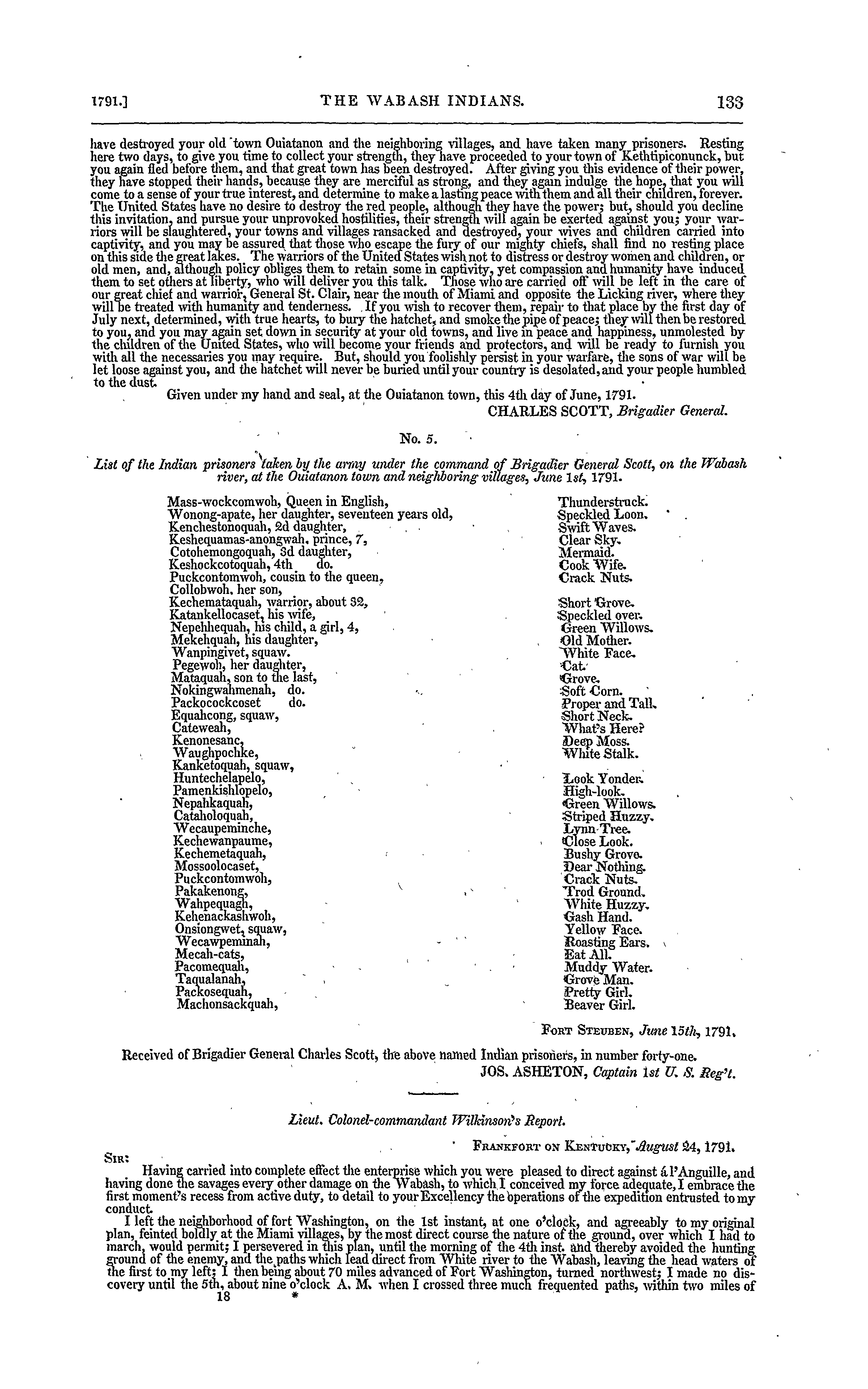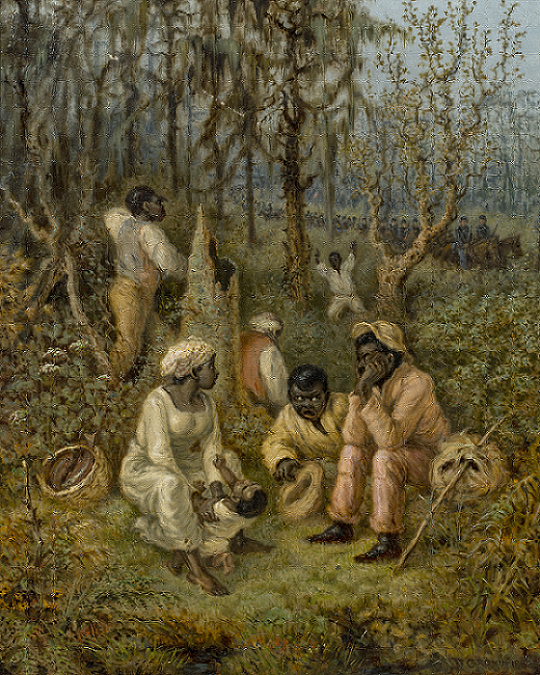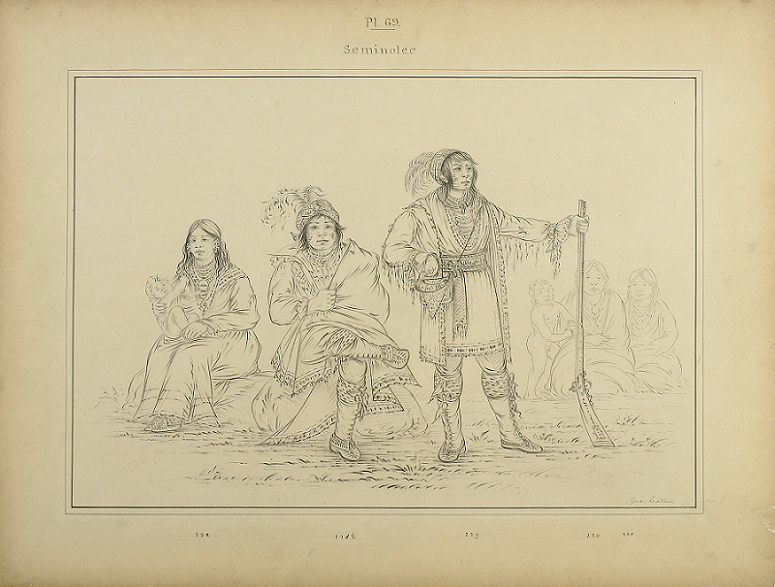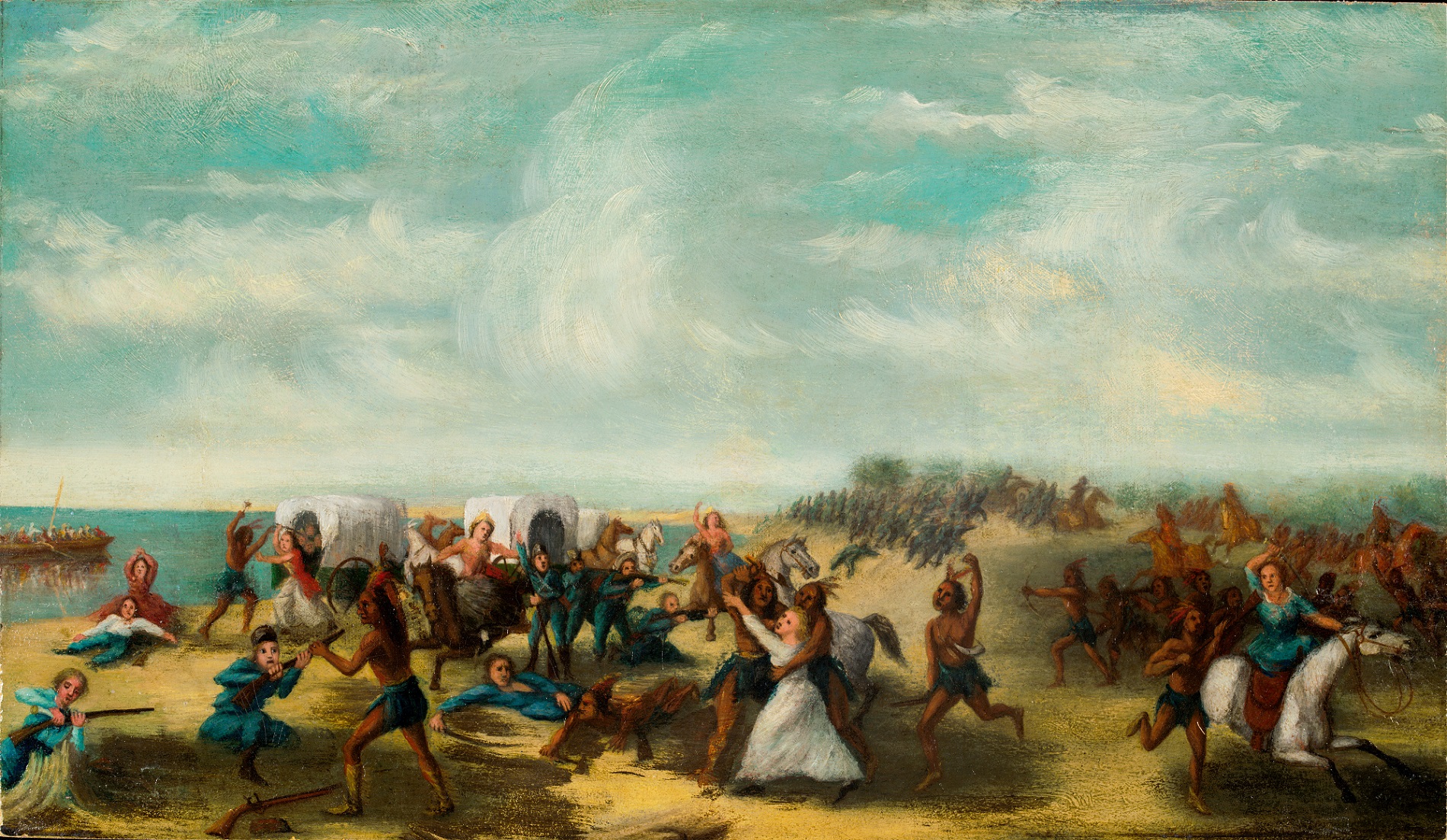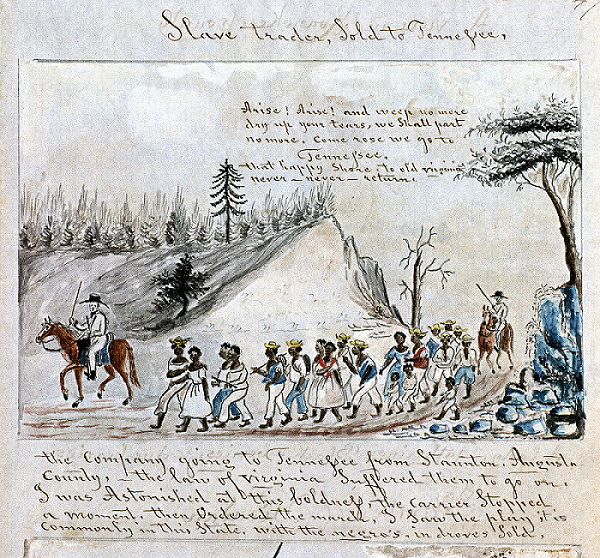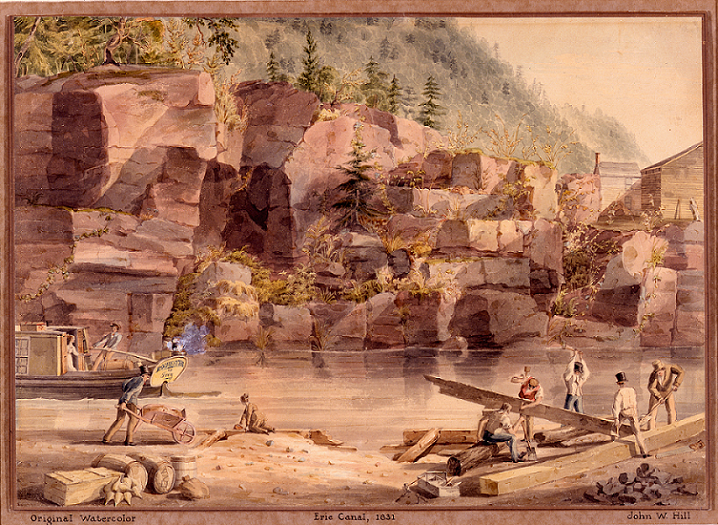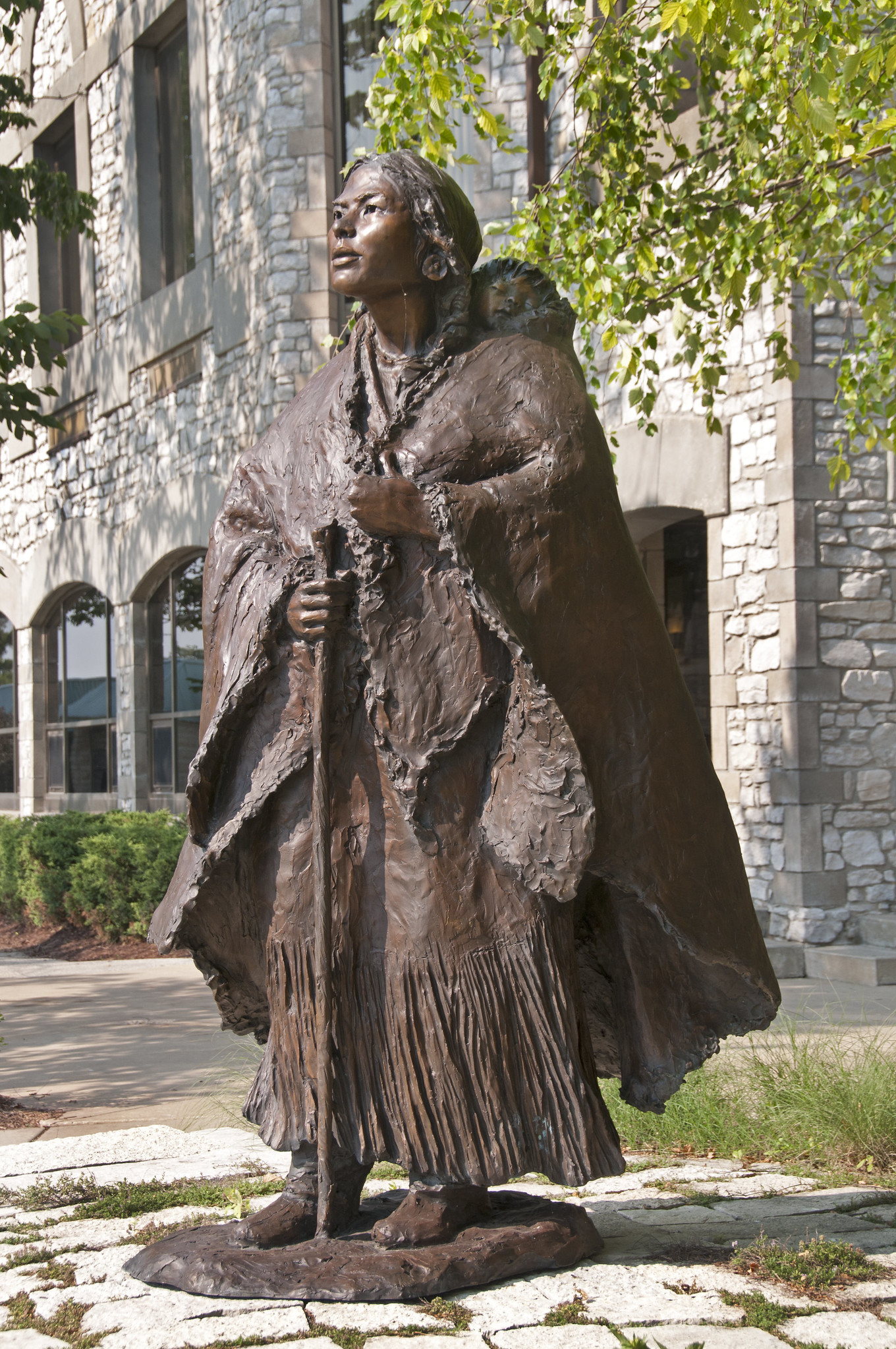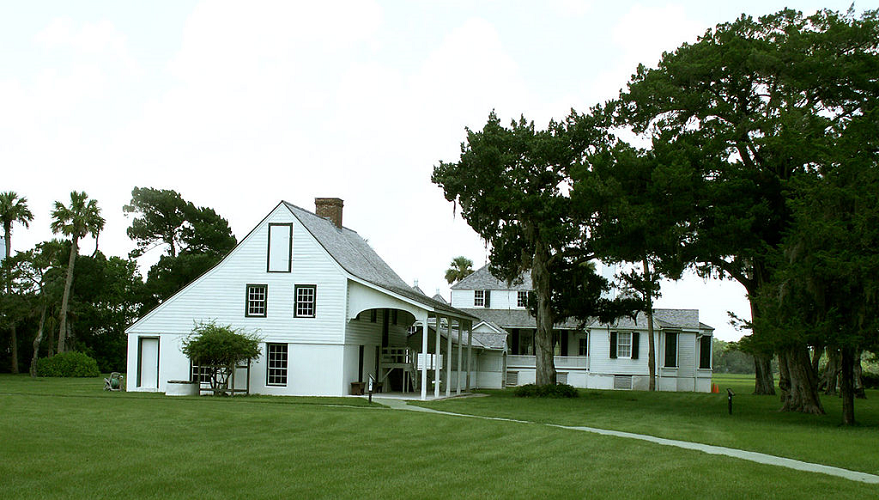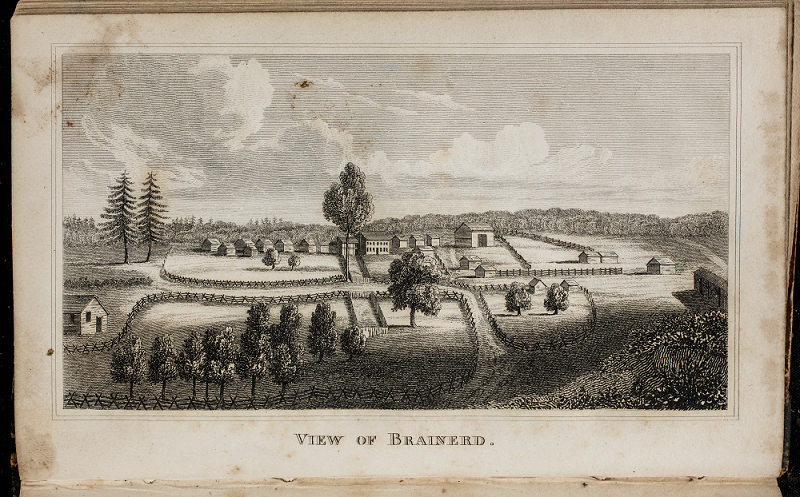Key Ideas
- The lives of women involved in U.S. western expansion differed greatly from those who lived in the established states.
- Shifting U.S. government policies wreaked havoc on the lives of women living in lands claimed as U.S. territories.
- Women of different races and social classes had different experiences of western expansion.
Introduction
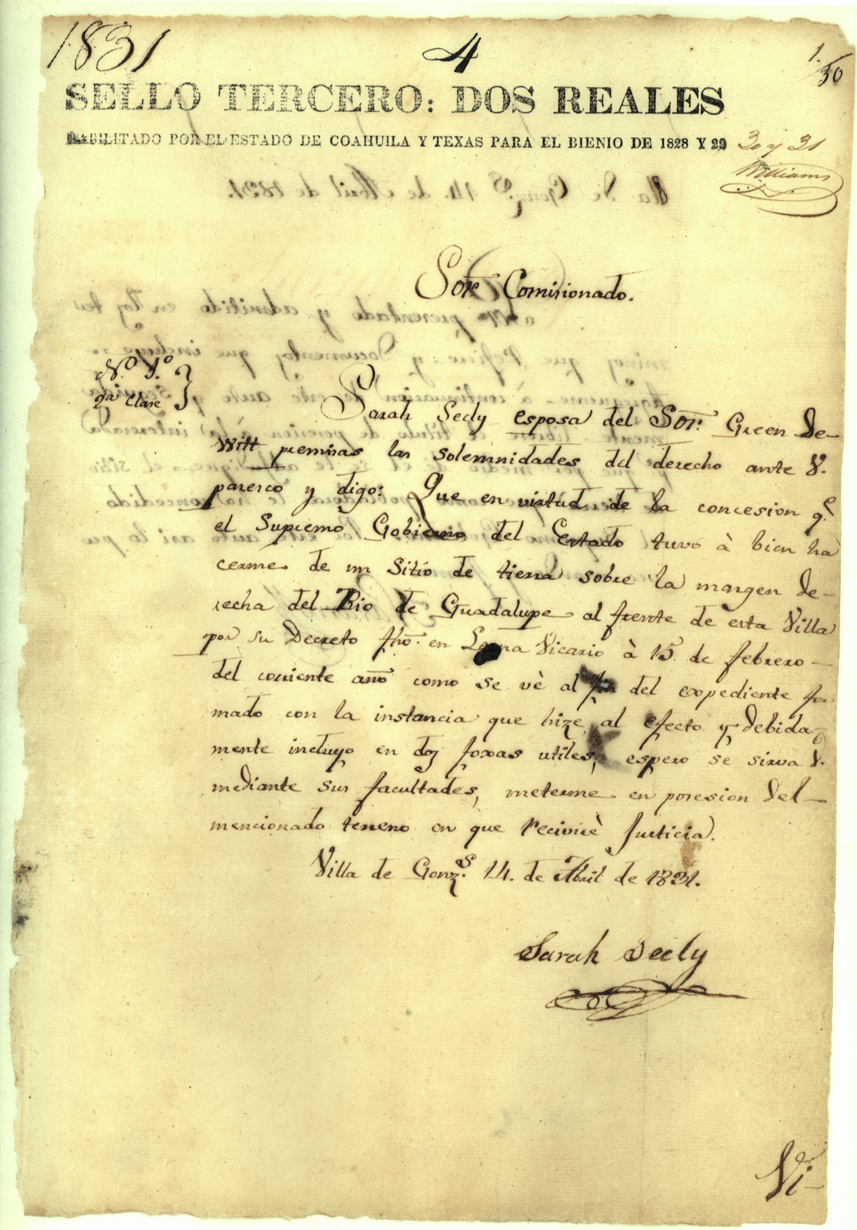
Sarah Seely DeWitt, “Sarah Seely Dewitt’s Petition for a Mexican Land Grant,” April 14, 1831. File NO. SC00119:4, Texas General Land Office.
Early Expansion
As soon as it was formed, the new U.S. government turned its attention to expanding its boundaries westward to make sure there was enough land to ensure a good quality of life for its citizens. Starting with George Washington, every U.S. president pursued policies to take land from Indigenous communities and redistribute it to white settlers. This sparked widespread conflict that stretched from the Great Lakes to the Florida swamps. Indigenous women were swept up in the conflict in a myriad of ways, from assisting U.S. expeditions to suffering unfathomable losses and displacement. Meanwhile, U.S. missions sought to permanently alter Indigenous cultural traditions to better match U.S. ideals of civilization. The result was a period of rapid and often violent change that would profoundly affect Indigenous communities for generations to come.
But the effects of U.S. expansion policies were not limited to Indigenous women. White women settlers faced often insurmountable challenges when trying to establish new homesteads in western territories and were forced to adapt in ways that would not have been considered socially acceptable back east. Expansion projects also offered new opportunities for white women to travel and work, something that would not have been possible in the colonial era.
Westward expansion also started a new chapter in the history of American slavery with devastating results. Enslaved women from the eastern states were forcibly relocated to new plantations in the west in a mass movement historians call The Second Middle Passage. Free Black woman in territories acquired by the United States found their rights and freedoms brutally stripped away. But the acquisition of vast spaces uninhabited by white people also offered new opportunities for resistance through the formation of Maroon Societies founded by self-emancipated people.
Section Essential Questions
- What role did women play in the western territorial expansion of the United States?
- How did race and social class affect women’s experiences of westward expansion? What opportunities were created? What setbacks occurred?
- Why are women’s stories critical to understanding this period of U.S. history?




